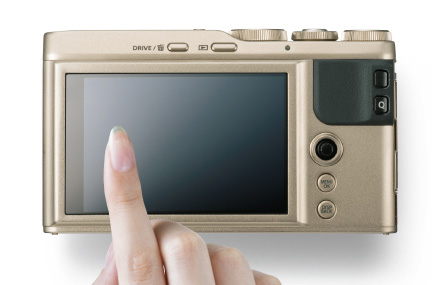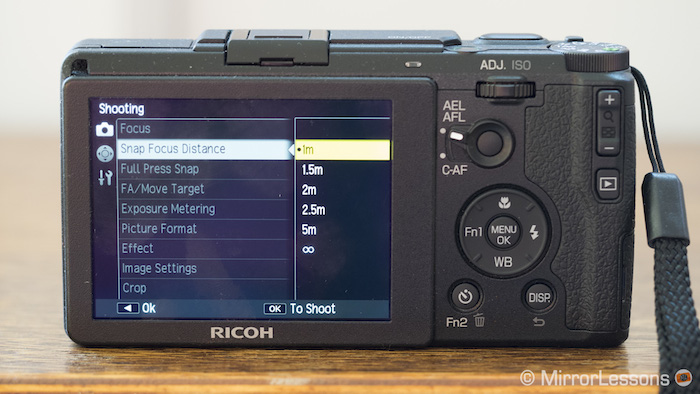The premium compact camera market has exploded over the past couple of years, with one of the most popular models being the original Ricoh GR and its successor the GR II. When we tested the II version a couple of years ago, we found it surprisingly fun to use for street photography and very rewarding as far as image quality and user experience are concerned.
Recently Fuji unveiled the XF10, a premium compact that appears to compete directly with the GR II. Like the Ricoh, it features an APS-C sized sensor, a fixed 18.5mm f/2.8 lens and a similar streamlined and minimalistic design. In fact, it bears a stronger resemblance to the Ricoh camera than it does to the other 18.5mm premium compact in Fujifilm’s range, the X70.
If you’re curious to know what the most relevant differences are between the XF10 and its direct competitor, the Ricoh GR mark II, you’ve come to the right place. We have all the answers here!
Ethics statement: The information supplied in this article is based on official specifications and our personal experience with the GR II. We were not asked to write anything about these cameras, nor were we provided with any sort of compensation. Within the article, there are affiliate links. If you decided to buy something after clicking the link, we will receive a small commission. To know more about our ethics, you can visit our full disclosure page. Thank you!
1. Sensor
The XF10 features a 24MP APS-C sensor whereas the GR II uses a 16MP APS-C sensor with no AA filter. The Ricoh camera impressed us with the level of detail its sensor and 18.5mm lens can deliver.
The XF10 has more resolution which can give you more leeway for cropping, but we’ll be curious to see how it compares to the sharpness you can get with the GR.
The XF10 comes with a native sensitivity range of 200 to 12800 ISO, while extended levels expand it to 51200 on the high end and 100 ISO on the low end. The GR II has a native range of 100 to 3200 ISO. The extended levels go as high as 25600 ISO.
The sensor used for the X-A5 is the same one found inside the XF10. We found the images quite usable up to 6400 or even 12800 if you are happy to accept some noise. With the Ricoh however I wouldn’t go past 3200.
2. Design and ease of use
Given the popularity of the GR series, it comes as little surprise that Fujifilm has designed the XF10 to look very similar to the GR II. The Ricoh camera is larger in terms of width by approximately half a centimetre but is also slightly lighter and not as deep as the Fuji.
- XF10: 112.5mm x 64.4mm x 41.0mm, 279g
- GR II: 117mm x 63mm x 34mm, 251g

On the rear, we find more buttons on the GR II. Despite being a relatively compact camera, we found the Ricoh quite intuitive and user friendly. That being said, the two dials on top of the XF10 next to the shooting mode dial might give you extra precision when changing your settings. A welcome addition on the XF10 is the AF Joystick that can be used to navigate the menu in addition to moving the autofocus point.

Viewed from the top we can see that the Ricoh has a larger front grip while the XF10 lacks a hot-shoe. This means you can’t attach external accessories such as a flash or optical viewfinder.
The GR lens extends when the camera is turned on unlike that of the Fuji. The XF10 also features a function ring on the lens which can be useful for different things such as manual focusing. On the GR you have to rely on the top dial which isn’t as precise.

Finally as you will have noticed from some product shots in this article, the XF10 comes in black or beige (champagne gold as Fuji calls it). The GR II is only available in black.
3. Lens accessories
The XF10 doesn’t have the possibility to attach accessories such as hoods or filters via an adapter ring.
With the GR II however, you can buy the special Ricoh GH-3 lens hood and adapter that also allows you to mount 49mm circular filter, the GW-3 wide angle conversion lens (21mm equivalent) or GM-1 Macro conversion lens.
4. Touch screen
Part of the reason the XF10 has fewer buttons is that Fujifilm relies more on the touch screen capabilities of the camera. In addition to being able to take a shot, move the focus point or swipe through your images, you can also flick in four different directions to activate four different functions, which is a substitute for the classic 4-way pad.

The GR II doesn’t have a touch screen. Both LCDs are fixed and can’t be tilted.
5. Autofocus
The XF10 uses a hybrid system with 91 points and the 49 central points (7×7 grid) are phase detection areas which provide more accuracy for moving subjects.
The GR II uses a contrast detection AF with 9 contrast detection points. It’s the same AF system of the original GR and will certainly feel outdated in comparison to the more advanced capabilities of the Fuji. That being said, we found it reliable in S-AF as long as there is enough light and the subject isn’t moving too fast.
But the feature we love the most about the GR II is Snap Focus, which is similar to zone focusing on a manual focus lens. You can set the autofocus to a specific focus distance (1m, 1.5m, 2m, 2.5m, 5m or infinity) and the camera will tell you how deep your depth of field is depending on the aperture you select. For example with 2m and f/11 you will have everything sharp from 1m to infinity. It’s very useful for capturing quick moments when doing street photography or reportage.

Fujifilm added a similar feature to the XF10 called Snapshot: you can choose between 1m and f/8 or 5m and f/5.6.
6. Speed
The XF10 can shoot at a maximum of 6fps whereas the Ricoh is limited to 4fps. The latter has better buffer capabilities with a rating of 999 frames in JPG versus only 13 on the XF10.
Both cameras use a leaf shutter mechanism that is quieter than focal plane shutters and allows you to sync at high speed with flash. The maximum speed is 1/4000s.
However only the XF10 features an electronic shutter that allows the camera not only to shoot in complete silence but also expand the maximum speed to 1/16000s. The GR has a built-in ND filter that provides 2 stops of compensation.
In bulb mode, the XF10 can keep the shutter open as long as 60 minutes: otherwise the slowest speed available is 30s. The GR II’s minimum shutter speed is 300s (excluding Bulb).
7. Video
The XF10 can record 4K albeit at a disappointing frame rate of just 15fps. In Full HD it can shoot at 60fps and in 720p up to 100fps with the High Speed Movie function that produces slow motion footage in camera.
The GR II has never received much praise for its video capabilities. It can do 1080p at 30fps but we didn’t find the quality great due to visible aliasing and a lack in sharpness. The only value you can change while recording is exposure compensation.
8. Bluetooth
Both cameras feature WiFi capabilities to connect to a mobile device (it’s one of the main updates offered by the GR II compared to the original model).
The XF10, being more recent, also comes with Bluetooth capabilities. It allows you to maintain a constant connection with your smart device without consuming as much battery power and you can transfer images automatically while using the camera.
9. Extra features
The two cameras have a number of things in common including bracketing, multiple exposure, time-lapse and RAW processing. But one feature the Ricoh keeps for itself is Interval Composite, which much like the Live Composite feature found on many Olympus cameras, allows you to record multiple images in succession and save only the brighter pixels to create one composite. It can be useful for star trails or light painting.

The XF10 has a few interesting features such as 4K Burst Shooting that allows you to save a JPG from any video frame shot at 15fps.
Both cameras have a Digital Teleconverter mode with two crop options that correspond to a 35mm or 50mm field of view (47mm on the GR II) by 36×24 format standard. On the XF10 the image keeps the 24MP resolution thanks to an upsampling processing so it works with JPG only. The function on the Ricoh works at a lower resolution than the native 16MP but you can save the original RAW file too.
10. Price
The XF10 will be available at the retail price of $500 / £450 / €520 which is less expensive than the price of the GR II today ($600 / £560 / €670).
The price of the Fuji camera is definitely competitive but the GR II is an older model which means you may find special offers or second-hand copies at a better price.
Conclusion
The Ricoh GR and its successor the GR II have found a niche of faithful users and we totally understand why: it’s a light and compact camera with clever features and excellent image quality.
With the XF10, Fujifilm is chasing the GR market more than it did back in 2016 when the X70 was announced. The competitive price puts it at an advantage but we’ll have to see how it performs before we can give a definitive verdict.
One thing we’ll be curious to compare is the picture profiles. The GR II has some powerful black and white presets that give you a distinctive look that differs from the standard monochrome modes of digital cameras, and it’s another reason why the Ricoh is so popular. The XF10 doesn’t have the X-Trans sensor but the Film Simulation modes should still produce a nice rendering.
Check price of the Fujifilm XF10 on
Check price of the Ricoh GR II on
Amazon | Amazon UK | eBay | B&H Photo
